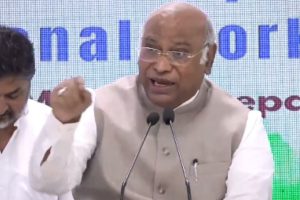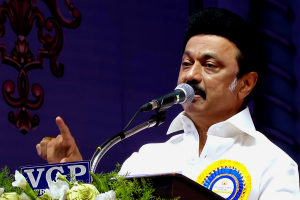A towering tree which got stuck in no-man’s-land when the British divided India and Bangladesh at Bongaon in 1947, has half of its branches canopying over our country and the other half over our neighbour’s. Its deep roots too would no doubt have spread out on either side underground without restriction. Rain pounds the earth without discrimination. A bird flies over from Bangladesh flapping its wings, dripping water indiscriminately over both countries before landing on a wet branch on the Indian side. Two stray dogs cross over too and loiter in India with no signs of returning.
The humans, however, are stopped at the gate on arrival by border security force (BSF) personnel and frisked. BSF pour over their documents before allowing them in.
Advertisement
It is ten days since the violent rebellion rocked Dhaka, Bangladesh’s capital, culminating in its former government falling and the then head, Sheikh Hasina Wajed, fleeing the country.
We have reached the border, 77 kilometres from Kolkata, to assess the ground situation at the biggest India-Bangladesh border in Bengal amidst reports, both confirmed and unconfirmed of violence in the villages, towns and cities within Bangladesh.
But Petrapol, the Indian side of the border, is unusually deserted, devoid of the bustle of usual business on other weekdays. Only a handful of people, dragging roller suitcases of various shapes and sizes, slowly walk in, looking lost. “We would have come earlier,” explains Rezia, who has just moved to India with her husband, mother-in-law and aunt-in-law and will stay here until things get better. “But it took a long time to get the visas because the change in administration has thrown everything off gear.” Her family is from a village in Benapol, the Bangladeshi side of the border. According to them, while there is indeed violence, it is not communal but political. “The Awami League supporters are being singled out and targeted,” she said. “Their houses are being torched, people dragged out and beaten, their belongings set on fire. Looting too is going on in some places.”
Sudha Biswas, from a small town in Jessore says that the violence is not completely free of communal tension and it is scary to be in the minority religion.” She admits, however, that even if violence is not always a reality, the fear is.
Authorities in Bangladesh have been putting out reassurances of the safety of the minorities living in the country. So have many minority community members. “I am a Hindu and I have not faced any backlash,” says a man from Dhaka who does not want to be named. “I have come to India on a regular business trip and I will return in a day or two.” He says that though he is not ruling out the idea that stray incidents are taking place in different places, he himself has not confronted any or heard of any instances.
“For a few days there were no visitors at all,” a BSF officer tells us. “This is because the administration in Bangladesh was going through a sudden change. Visas were not being granted. Gradually normalcy is returning and today for the first time we are seeing arrivals,” he said requesting anonymity.
The business at the border too has taken a huge hit. Trucks which on normal days carry goods to and from Bangladesh are parked on the sides of the roads. Tourist buses too. Shop owners have downed their shutters because of lack of business. Tea stall owner Debashish says that hundreds of visitors drop into his shop on other days. “Since the trouble started, there have been no customers. I have closed my stall.” Shop owners, hawkers and vendors are waiting for things to become normal. “Otherwise we will have to think of alternative means of income,” he says.
The change of regime in Bangladesh is glaringly visible at the border. A mural painting depicting Mujibur Rahman, Hasina’s father, considered the liberator of Bangladesh in the 1971 War with West Pakistan has been whitewashed. His death anniversary celebrations have been cancelled throughout Bangladesh.
He was butchered in a midnight coup on 15 August.
The date, 15 August, is inextricably linked to Bangladesh. Carved out of Bengal, as the country celebrated its midnight freedom
“Partition, the division of Bengal, was one of the most horrific stories of human displacement the world has ever witnessed,” says Chandra Kumar Bose, politician and the grandnephew of Netaji Subhas Chandra Bose. He says, “If Netaji was alive in 1947, (Chandra Bose and his family endorse the theory that Netaji was killed in a plane crash in 1945 in Taiwan) he would never have allowed the division of Bengal.”
But Bengal was divided. Bangladesh, then East Pakistan, was carved out of it with a zigzagging knife as it were, the blood of its displaced people dripping to this day.











